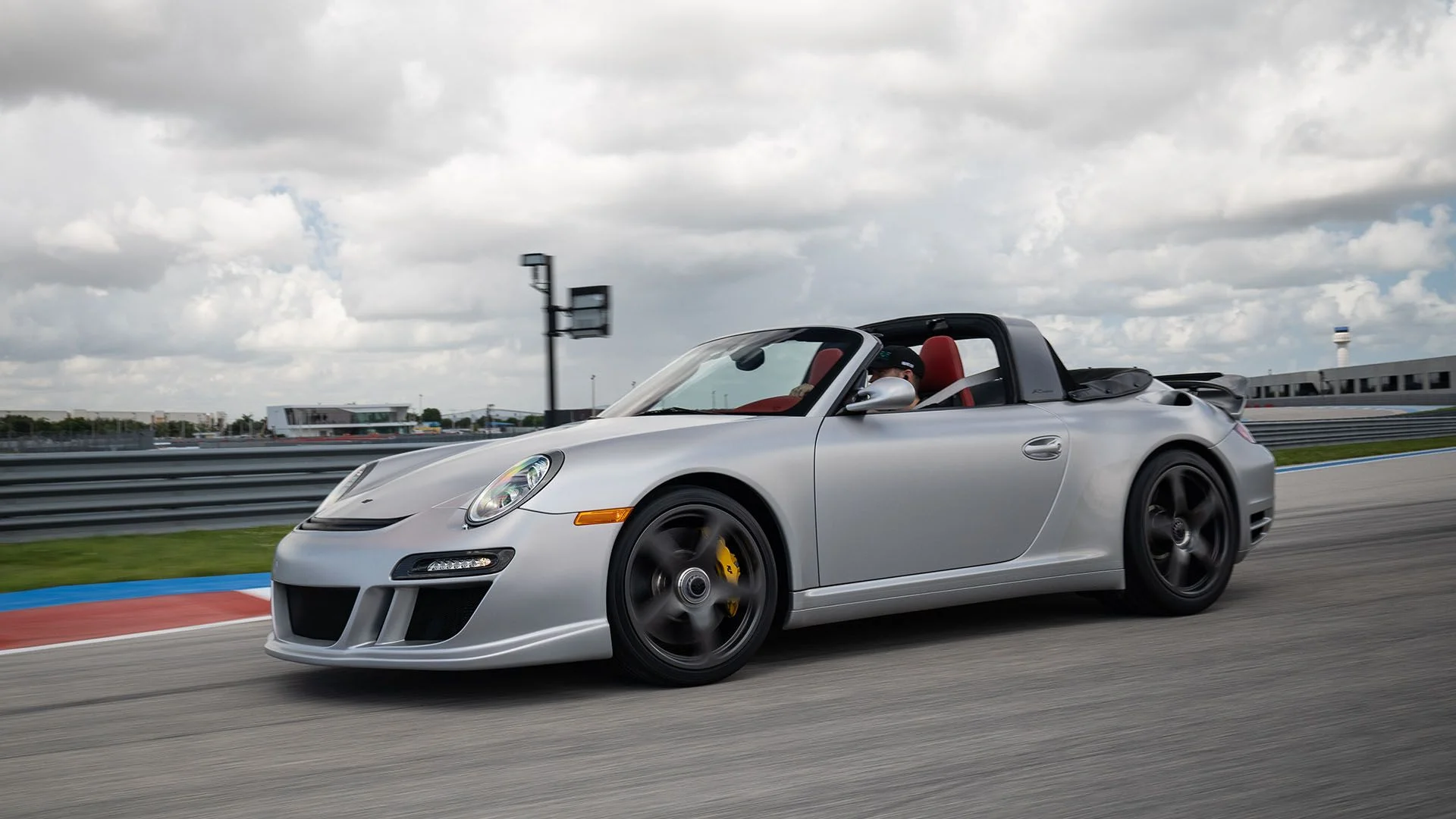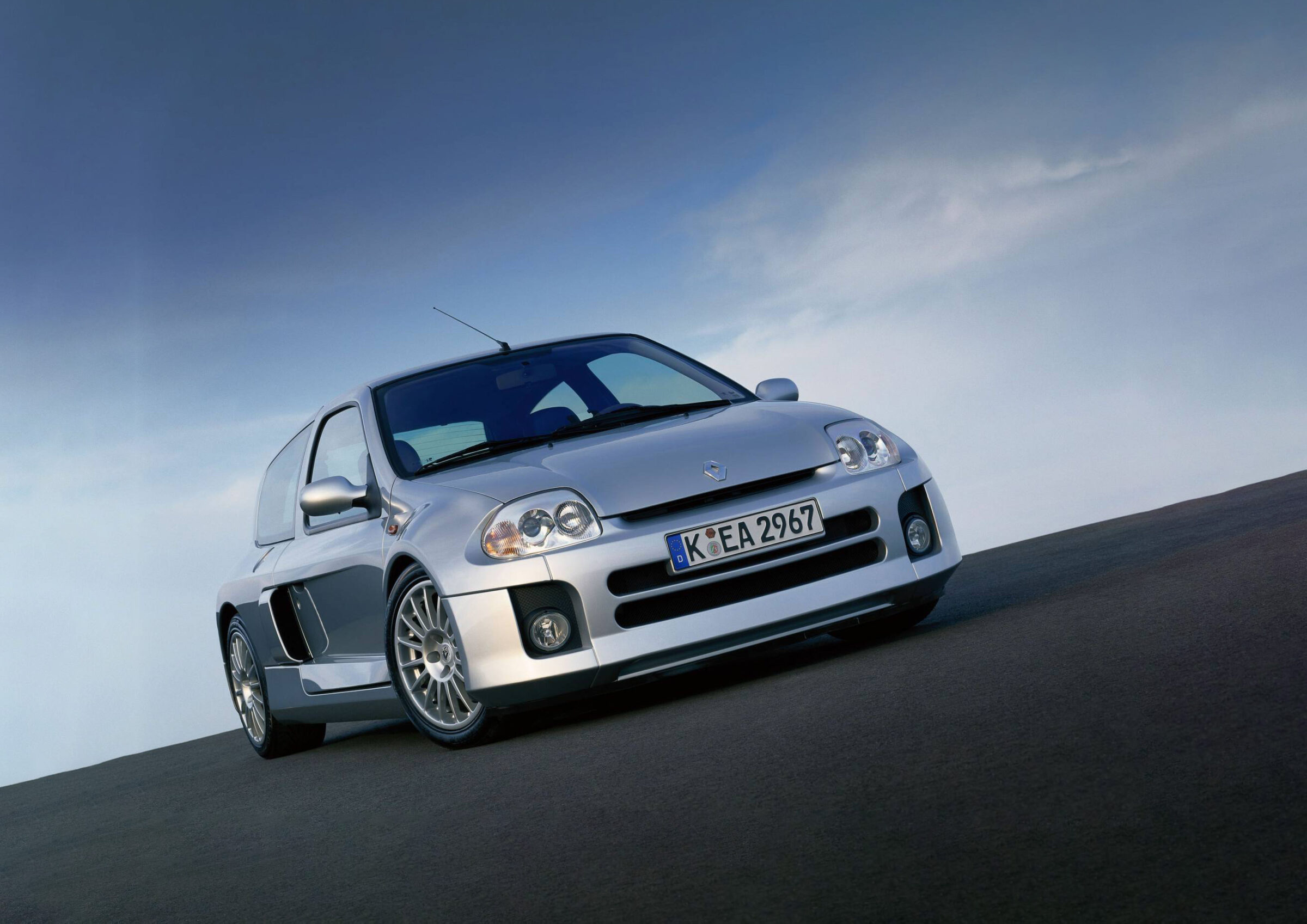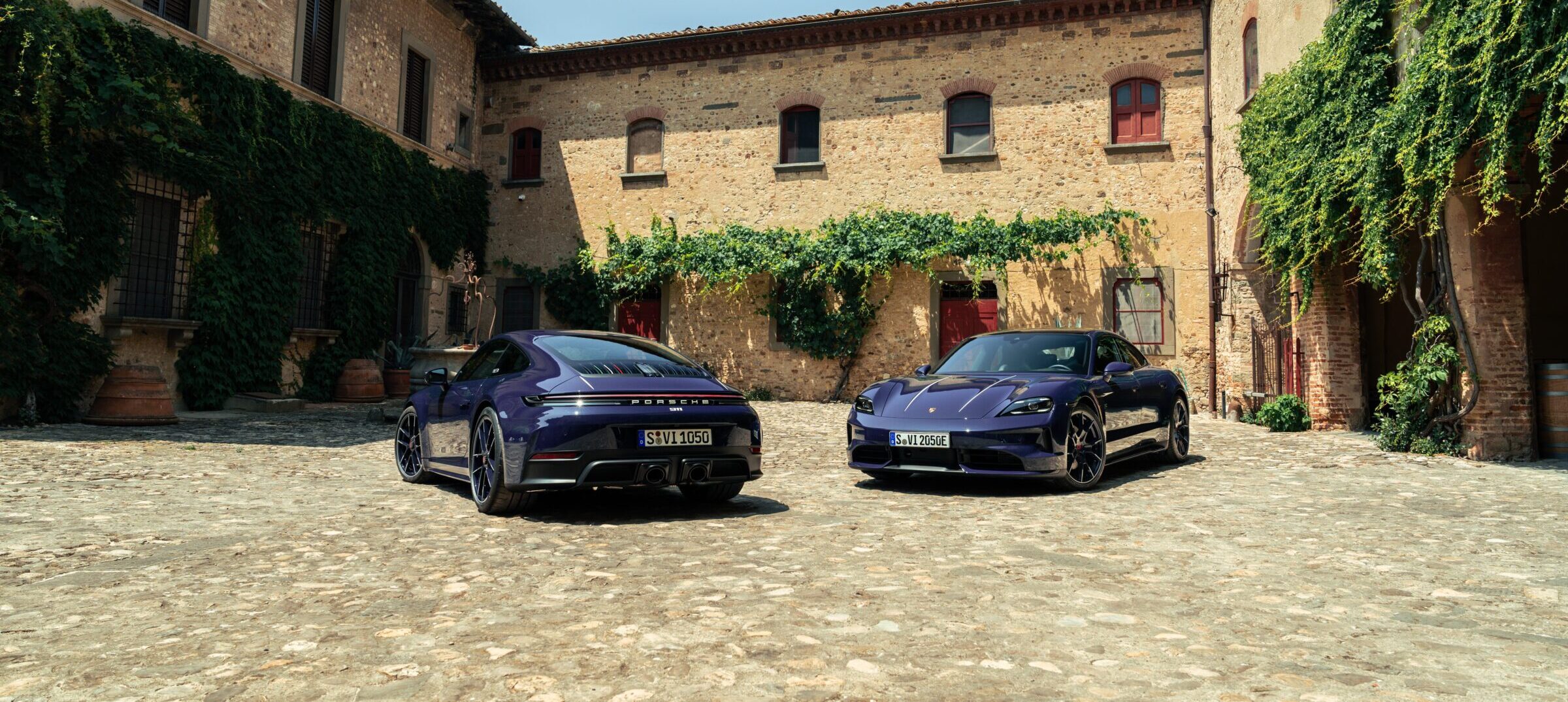Porsche 597 Jagdwagen
It is often said that the first off-road vehicle from Porsche is the Cayenne, which has been coming off the assembly line in Leipzig since 2002. If you replace the words ‘off-road vehicle’ with the modern abbreviation ‘SUV’, the sentence is even correct. Otherwise, however, it isn’t. On the one hand, Ferdinand Porsche was significantly involved in the development of the Volkswagen-based Kübelwagen and Schwimmwagen, and on the other hand, there was even a thoroughbred off-road vehicle of the Porsche brand. However, since this is about as rare as a four-leaf clover, many car fans don’t know it at all. A good reason for us to look into the history of the Porsche 597. One thing can be anticipated: Without a military call for bids, this vehicle would never have been built. We go back to January 19, 1953, the day on which an official inquiry was made by the predecessor institution of today’s ‘Bundesamt für Wehrtechnik und Beschaffung’ (Federal Office of Defense Technology and Procurement), named after its head, State Secretary Theodor Blank, as ‘Amt Blank’ at the Association of the German Automotive Industry for interested manufacturers who could develop and later also manufacture suitable vehicles for the military. Originally, no tax funds were to be available for this purpose. A total of three manufacturers followed this request: Auto Union from Ingolstadt, the Borgward Group from Bremen and finally also Porsche.
While we may one day deal with the development history of the other two candidates in own articles, we will stay with the design from Stuttgart Zuffenhausen for now. This was first available in prototype form for road tests on January 19, 1955, exactly two years after the inquiry. Over time, Porsche provided different bodies with and without doors. At the same time, development continued in Stuttgart to improve the concept. For example, the displacement of the four-cylinder boxer engine from the 356 was increased from the original 1.5 to 1.6 liters, providing 50 hp and 105 newtonmeters of torque. These were transmitted to the rear axle via a manual five-speed gearbox, with the front axle being engaged by lever and the first gear being very short. Thanks to independent suspension, very good slope angles and a climbing ability of 65 percent, the Type 597 was able to excite even in difficult terrain. Depending on the version, the vehicle weight was between 870 and 990 kilograms and the topspeed was around 100 kph (62 mph). Porsche was so proud of the new development that the 597 was exhibited at the 1955 Geneva Motor Show. In autumn of the same year, the British Rhine Army, which was responsible at the time, inspected the different prototypes of the three applicants. Today’s Bundeswehr, the German army, was only founded in November 1955. At that time, Porsche had already converted their prototypes to 24 volts on-board voltage and five synchronized gears. In total, the test car fleet covered around 5,800 kilometers (3,600 miles). In addition to praise for robustness, simplicity and good maintenance possibilities, Porsche also had to take note of criticism of the suspension, the excessively small interior with little stowage space and poor pulling power at low and medium revs. Likewise, the rear engine design with a petrol tank at the front was considered unsafe and the steering characteristics at high speeds were insufficient.








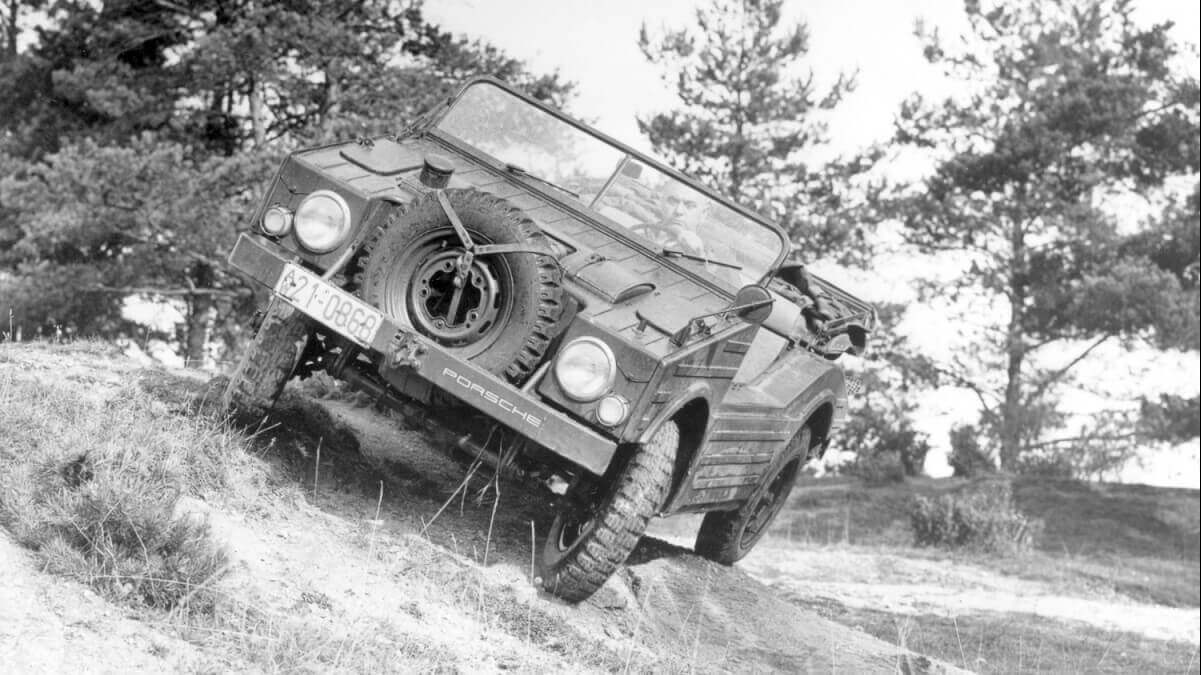







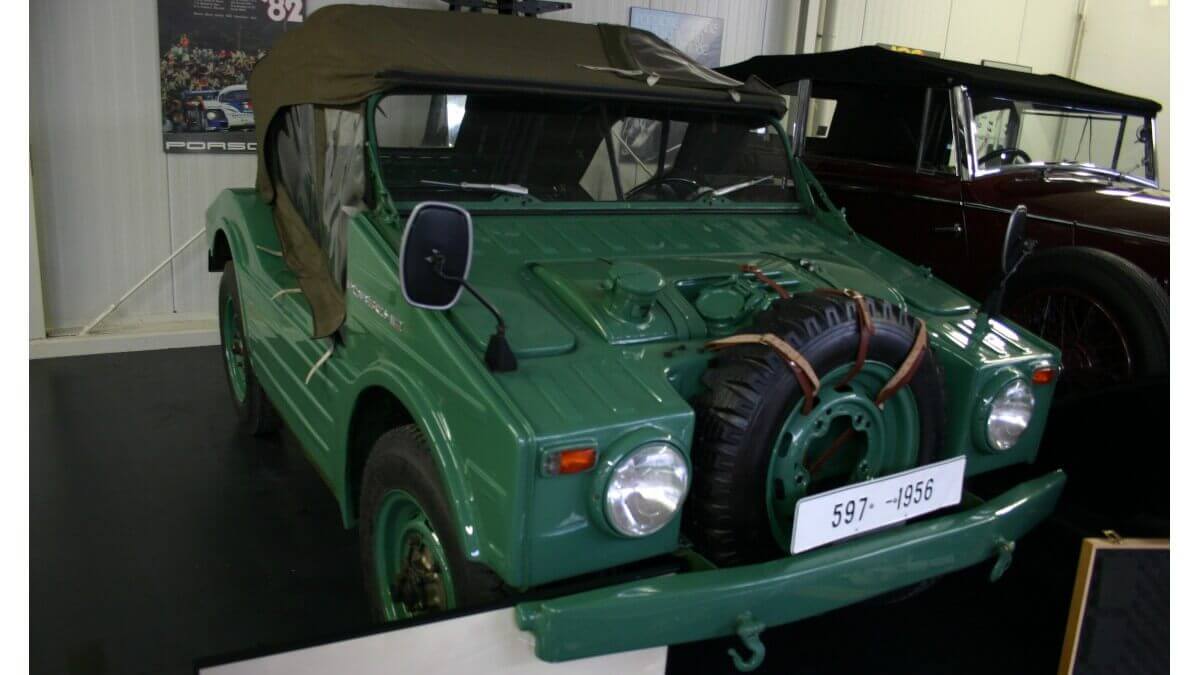



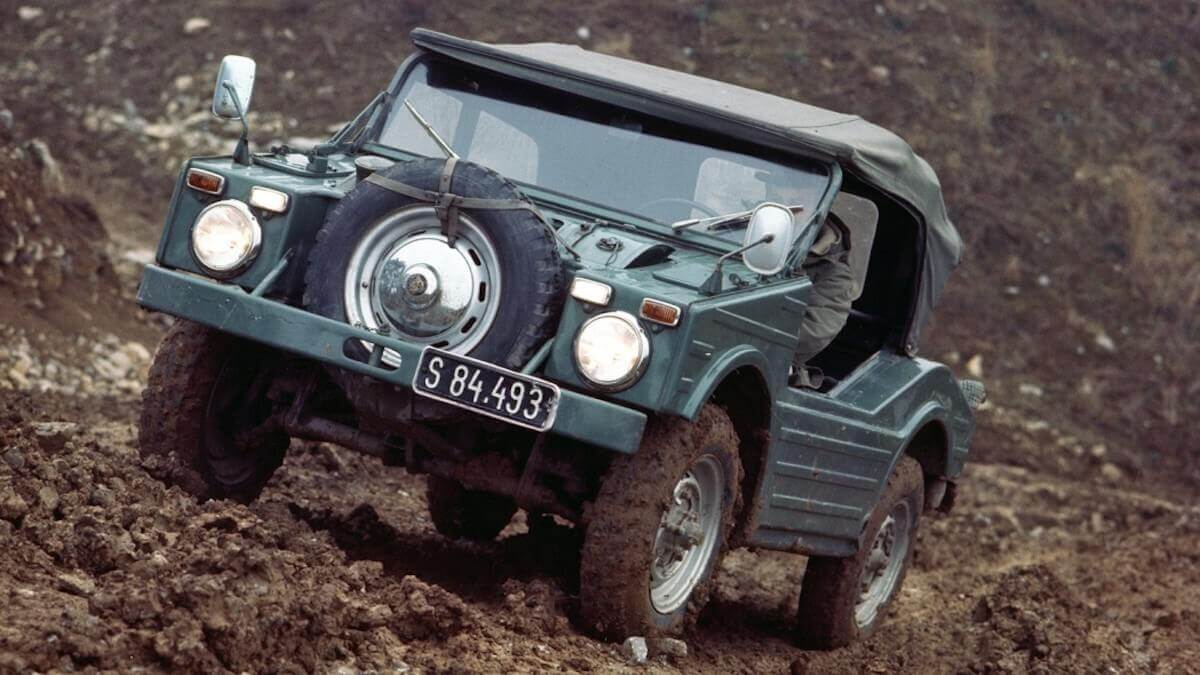

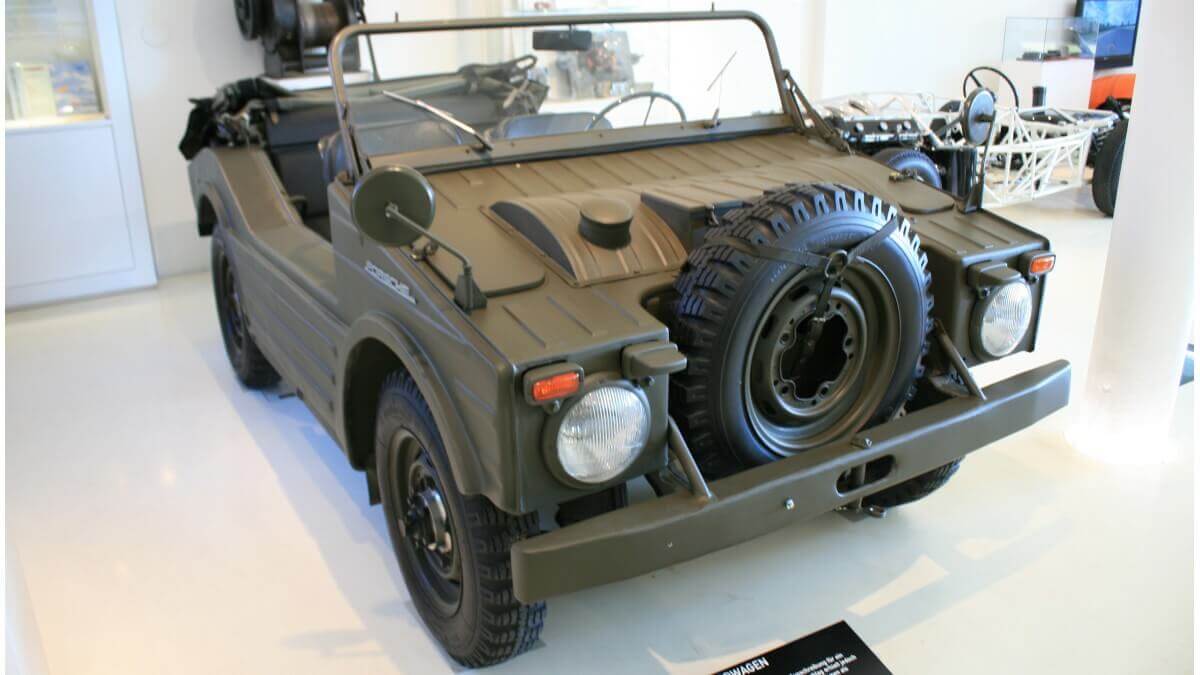





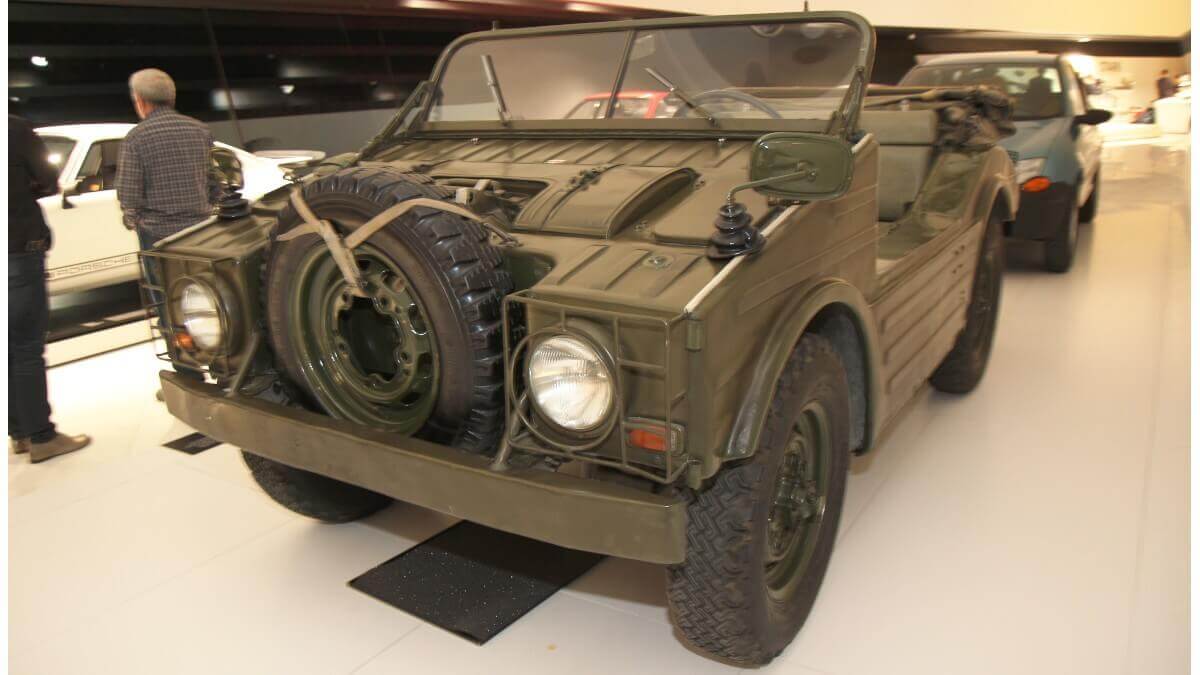





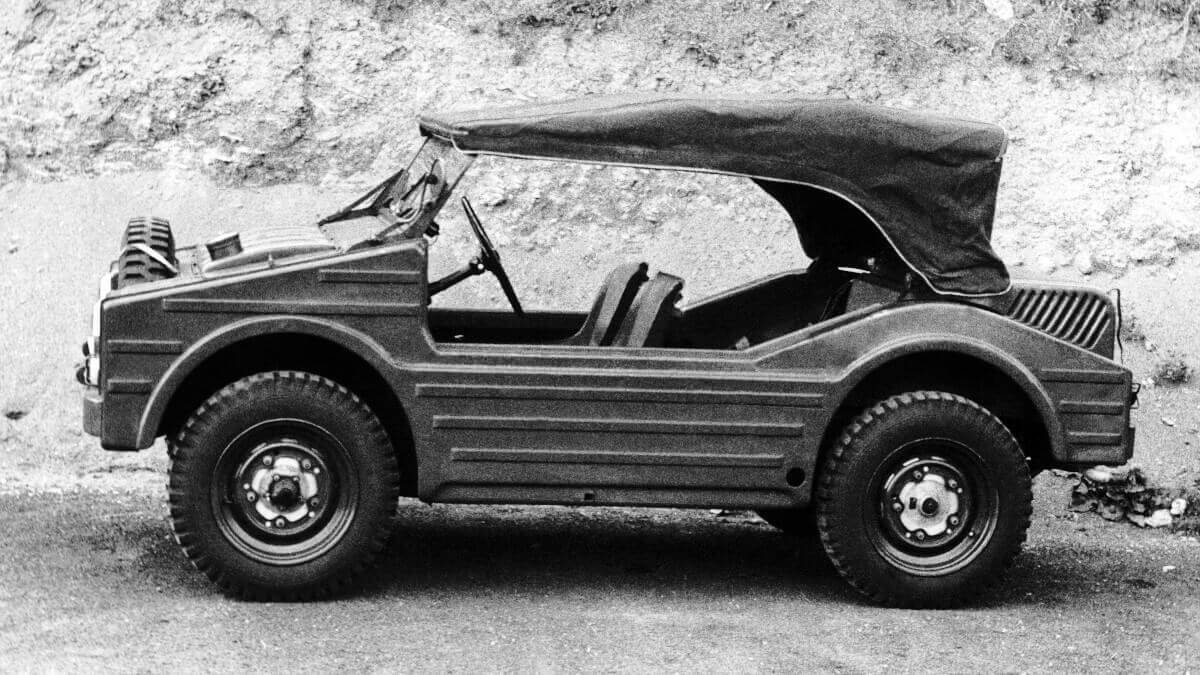





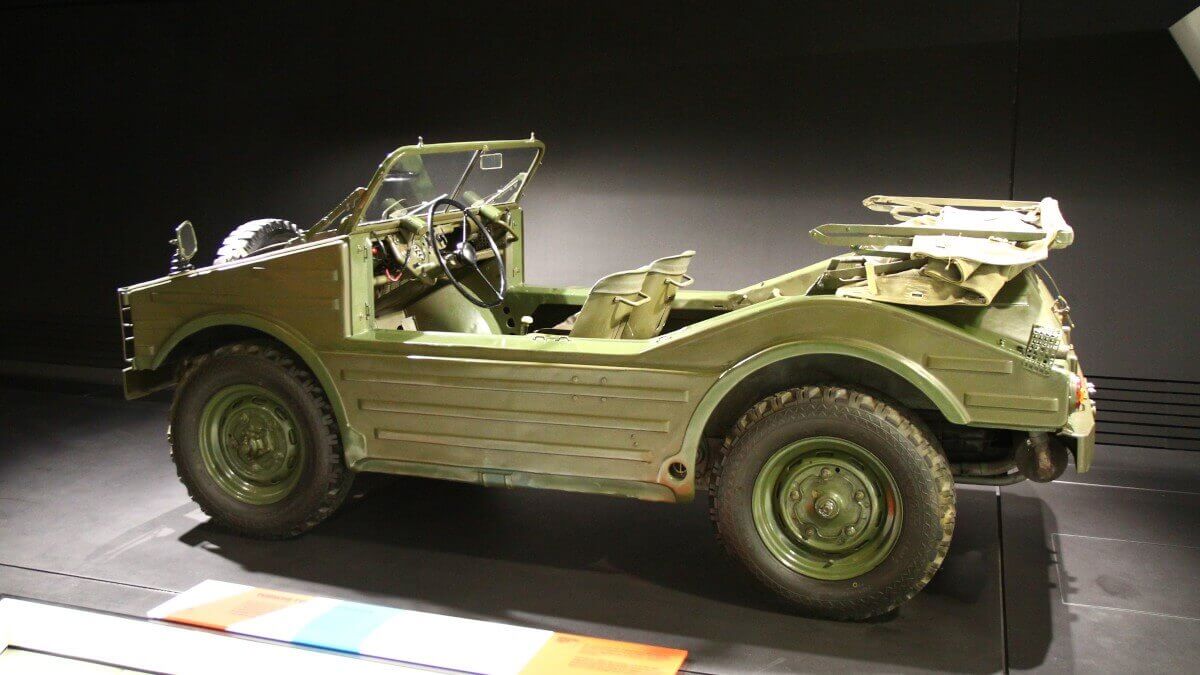



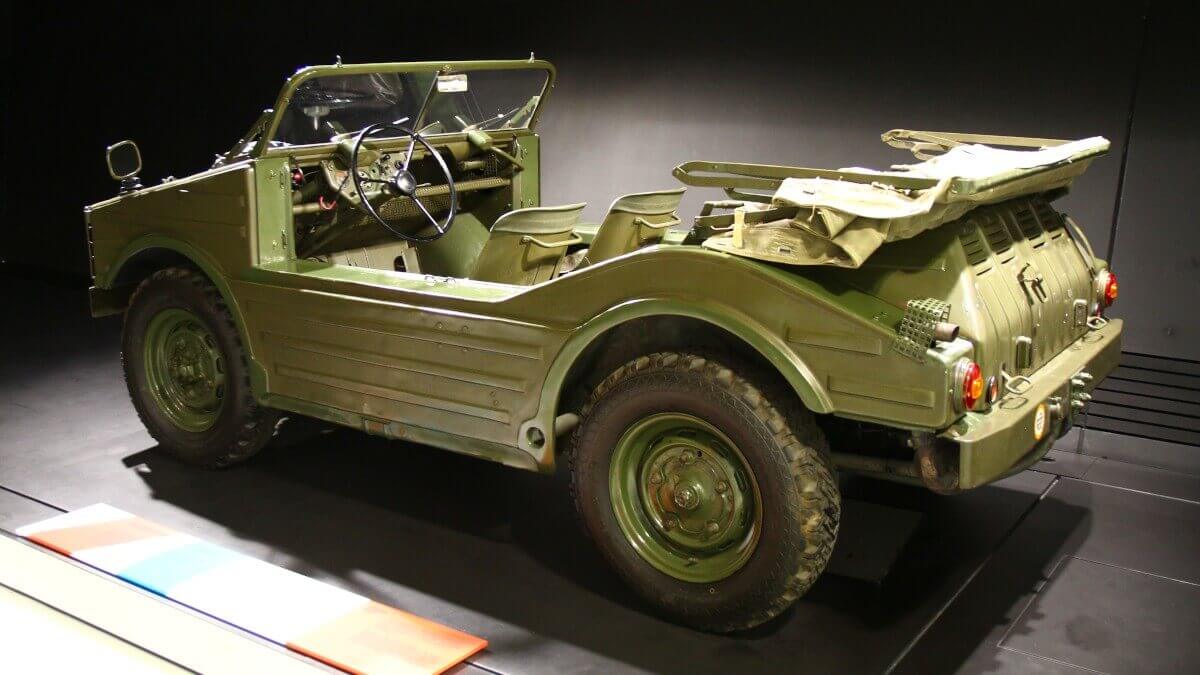







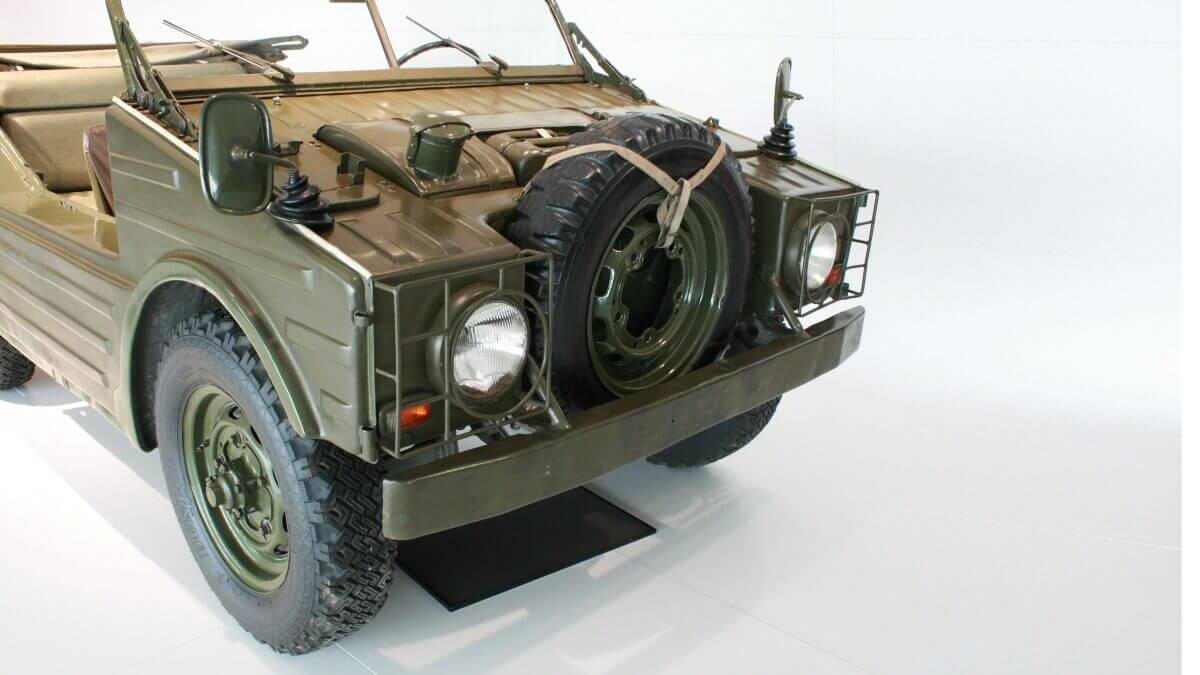









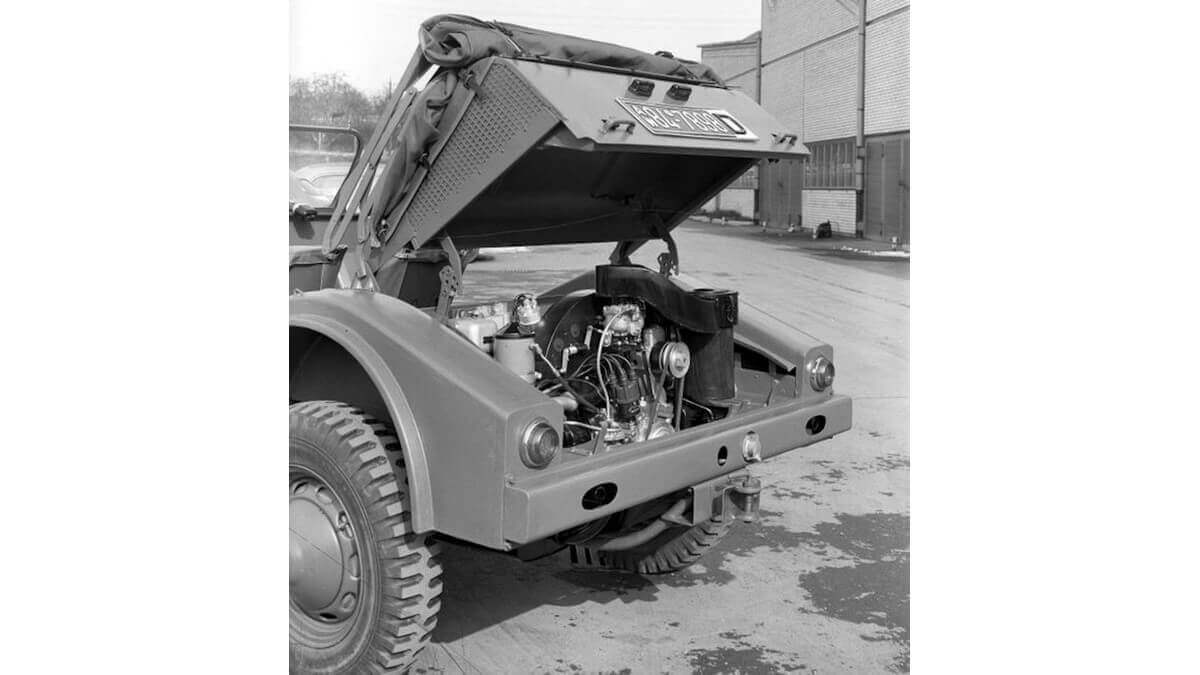



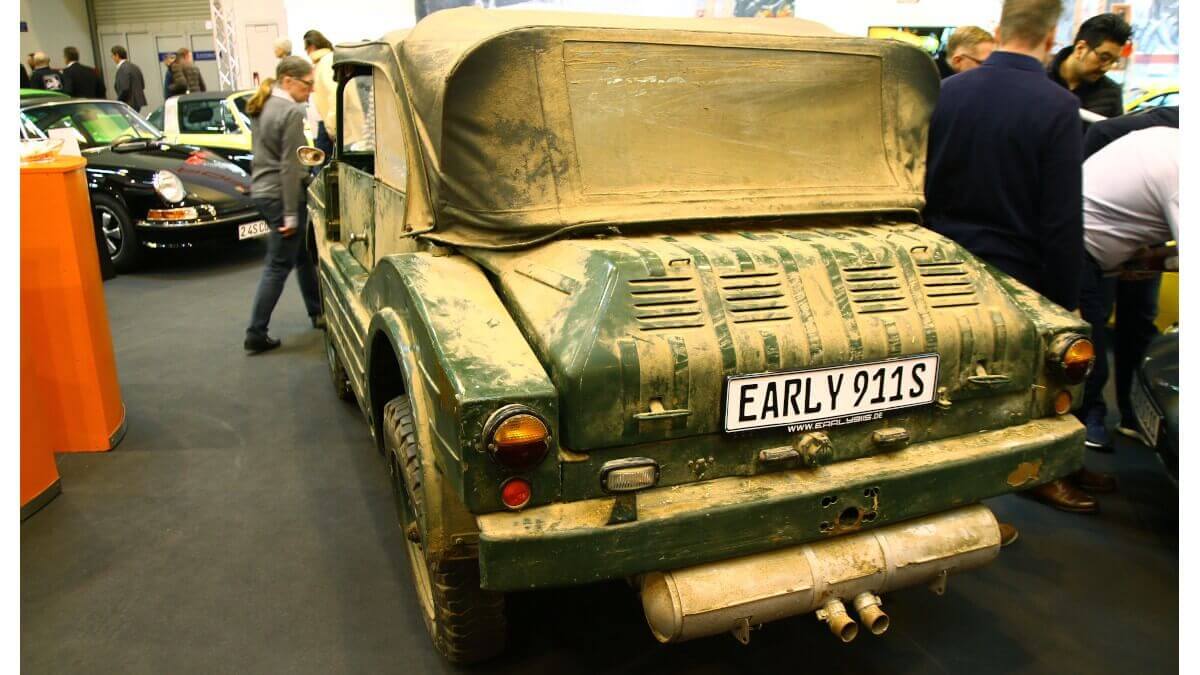



In addition to the decision-makers behind the German military contract, Porsche tried to convince other potential customers of the qualities of the 597 and therefore provided a prototype for driving tests at Mannesmann-Werke in Oberhausen in January 1956. This was where Brazilian President Juscelino Kubitschek arrived, who had already tried out the DKW Munga in Düsseldorf with his entourage the day before. In the end, Porsche didn’t receive an order from Brazil, while the DKW Munga finally rolled off the assembly line in South America in a modified version called ‘Candango’. From 15 January 1956, the decisive comparison of the three opponents took place at a military training area in Andernach, for which Porsche had provided six vehicles. In the course of this trial over rough and smooth, various damages occured, which, together with the high production costs, were regarded as the greatest negative point of the Porsche. At the same time, there were also situations in which the 597 was used to pull the prototypes of the other brands out of the mud. Final driving comparisons were announced for May 1956, for which 44 more cars were reordered from Porsche. At that time, there were 50 military examples of the 597, which was finally defeated by the DKW Munga. Nevertheless, the Bundeswehr kept most of the prototypes for a longer period and sold the last one only on 26 October 1972.
Porsche itself decided to build up a small series of a further 49 vehicles and sell them to private customers. The focus was on hunters, foresters and farmers. For this purpose, the nickname ‘Jagdwagen’ (hunting car), which is still used today, was created. It is unclear whether Porsche really built 49 new vehicles or overhauled some old military prototypes in the factory and then sold them. Officially, there is a total of 71 or 99 units in circulation. While early bodies were built at Reutter in Stuttgart, Karmann later also built some bodies. For a while, the Zuffenhausen plant even considered a version of the 597 with a reinforced platform frame and a wheelbase extended from 2,060 to 2,200 millimeters, as well as five different body variants. For cost reasons these considerations were never realized. Today there are still around 50 Porsche 597 Jagdwagen known worldwide. Many owners are organised in the ‘Porsche Jagdwagen Registry e.V.’, which is probably the smallest Porsche club in the world. Our picture gallery gives a good overview of the history of this first Porsche off-road vehicle, which is worth at least 250,000 € among collectors today. We show you pictures of early prototypes up to five cars that still exist today.
Images: Porsche, Matthias Kierse


